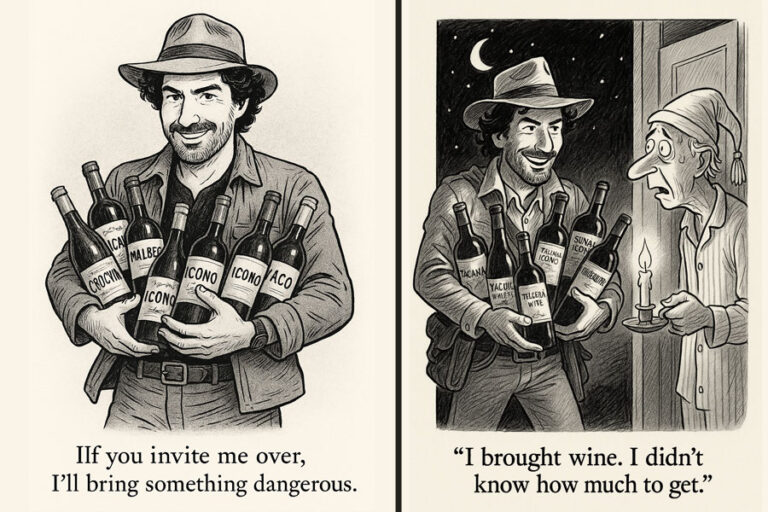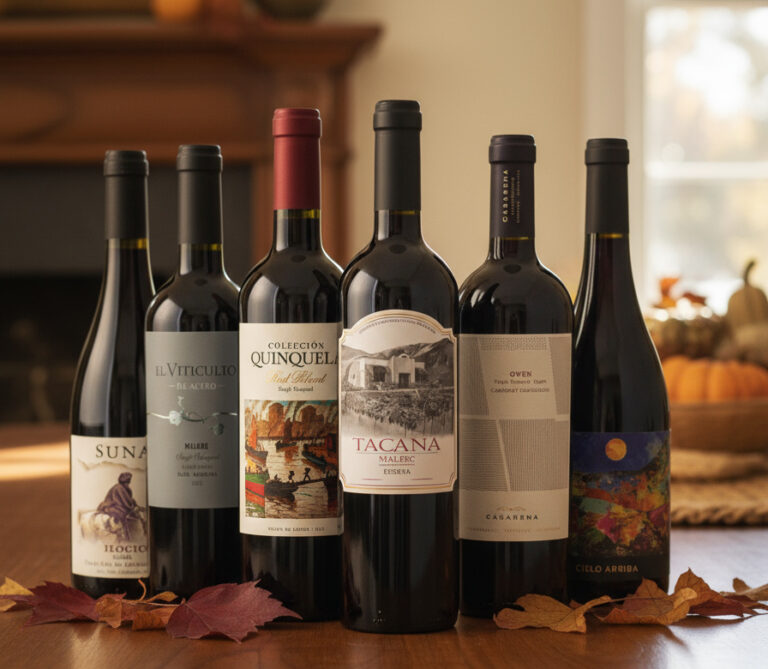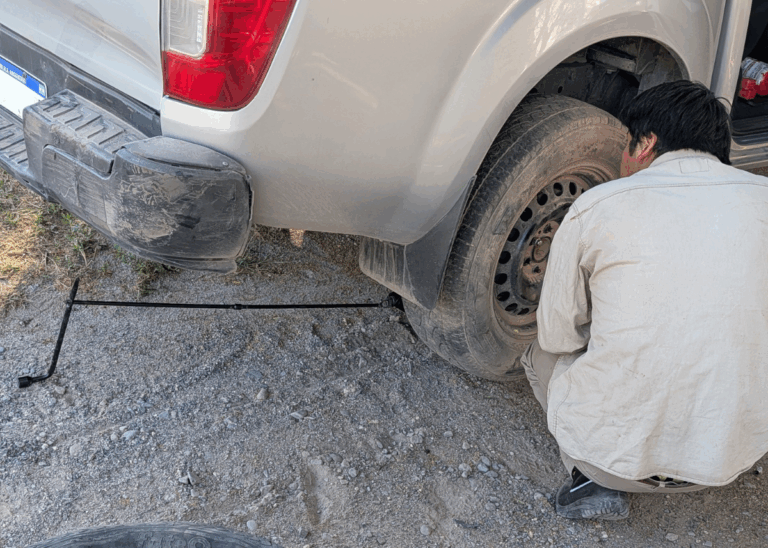[et_pb_section fb_built=”1″ _builder_version=”4.11.1″ _module_preset=”default” global_colors_info=”{}”][et_pb_row _builder_version=”4.11.1″ _module_preset=”default” global_colors_info=”{}”][et_pb_column type=”4_4″ _builder_version=”4.11.1″ _module_preset=”default” global_colors_info=”{}”][et_pb_text _builder_version=”4.11.1″ _module_preset=”default” global_colors_info=”{}”]Contents:
- How to Throw the Perfect Wine Tasting with Julien Miquel
- Where Does Resveratrol Come From?
- What Does Resveratrol Do, Really?
- What Are Sirtuins? Exploring the Sirtuin Pathway
[/et_pb_text][et_pb_text _builder_version=”4.11.1″ _module_preset=”default” global_colors_info=”{}”]
Back in Boston, many years ago, we had a classics professor, an expert on tragedies and myth, who held that Oedipus was a magic mushroom.
To brush up on your Greek drama, Oedipus was the tragic figure who killed his father, married his mother, then found out and blinded himself.
We struggle to remember the finer points of our professor’s thesis, but it had something to do with Oedipus in his later years: blinded and partially lame, our professor’s reasoning went, his shape resembled a mushroom.
The man insisted that he had never done drugs. (With insights like that, perhaps he didn’t need to.)
Still it is true that there was – and remains – a long standing belief in human society that the Earth’s spirit or wisdom could be relayed to humans through plants.
A nutrient found in certain wines suggests there may be some truth to that.
More on that in a moment. But first… 4 ideas for your next wine tasting party.
This week with wine expert Julien Miquel, we revisit his wine tasting primer: everything you need to structure your own wine tasting event… from a big party… to a small pre-dinner warmup for your palate… and everything in between!
[/et_pb_text][et_pb_video src=”https://youtu.be/6eA9YEPqzCU” module_id=”video” _builder_version=”4.11.1″ _module_preset=”default” width=”71%” width_tablet=”85%” width_phone=”100%” width_last_edited=”on|phone” module_alignment=”center” global_colors_info=”{}”][/et_pb_video][et_pb_text _builder_version=”4.11.1″ _module_preset=”default” hover_enabled=”0″ global_colors_info=”{}” sticky_enabled=”0″]
calling BS on “antioxidant” resveratrol (Continued)
Where Does Resveratrol Come From?
Long-time readers (and extreme altitude fanatics) know the image well: the lonesome vine in the high desert valley, buffeted by roaring winds, scorched by UV rays, its long, deep roots searching vainly for moisture… the Calchaquí Valley vine teetering on the brink of survival at 9,000 feet.
As a by-product of that fight for survival, the grape skins fill with a nutrient called resveratrol.
A lab test we conducted in 2020 pitting some extreme altitude malbecs against common supermarket reds found the malbecs had up to 10 times more resveratrol.
But is that good?
What Does Resveratrol Do, Really?
The name resveratrol might be familiar to you. When you hear claims that red wine is healthy, resveratrol is usually the mechanism, specifically as an antioxidant, which decreases “oxidative stress” on our cells (essentially, it stops them from getting shredded by unstable oxygen molecules).
Studies, however, suggest that resveratrol’s effect as an antioxidant may be the least interesting (and impactful) thing about it.
For example, an animal study found that resveratrol increased production of new neurons (the messengers that help your brain communicate with your body), decreased the number of apoptotic cells (cells that have reached “old age”), and led to overall increases in “plasticity” (the process by which the old dog does, indeed, learn new tricks).
A French study also found a boost in neuron growth (after three glasses of wine).
According to a paper from Stanford, resveratrol may protect against Huntington’s and has been linked to lower rates of dementia and Alzheimer’s, possibly because of its effect on a signaling mechanism that stops beta-amyloid plaque from forming.
There’s the heart health benefit, too, of course. Several years ago, the press made much of the story of an English doctor who prescribed red wine to his heart patients. Australian researchers have argued the case for prescribing it as well.
The source of resveratrol’s power appears to lie in a pathway known as the “universal regulator of aging.”
Let’s return to our lonesome vine up at 9,000 feet.
What Are Sirtuins? Exploring the Sirtuin Pathway
Studies have long documented the biological changes that accompany physical stress such as near starvation, or exposure to extreme elements in humans and plants alike. For example, subjecting yeast to hot and cold temperatures increases longevity 30%. In humans, caloric restriction (fasting) has been shown time and again to change how our bodies age, leading to longer lives and lower instances of disease.
At the root of these changes is the “sirtuin pathway.” It’s like a survival switch. Under intense pressure it ticks on, focusing the organism (whether a human body or a plant) towards one goal: preservation. Processes that destroy or degrade our systems slow, giving a boost to processes that preserve and regenerate.
Growing at extreme altitudes, with little water, shocking temperature swings, intense UV exposure (and more), the malbec vine’s survival switch turns on, activating its sirtuin pathway.
Sirtuin activation has several effects on the vine, including larger leaves, thicker bark, lower yields, and thick, dark grape skins – loaded with resveratrol.
When the grapes become wine, they bring their resveratrol with them into the bottle, and, eventually, into your body.
And here’s where the story comes full circle: once in your body, the resveratrol activates your sirtuin pathway, simulating the effect of prolonged fasting.
Do you see what’s happening? Through its resveratrol, the vine is passing its resilience on to you, the drinker.
This “natural wisdom” on how to preserve the body from age and disease, known to all living things through their sirtuin pathway, is spoken through the vine and relayed into the human body by its wine.
Perhaps our professor was on to something.
Until next week,
The Wine Explorer
P.S. Cases of great wines from our most recent Ancient Wines collection are still available at deep discounts (limited time offer)… Simply click here to access your savings…
[/et_pb_text][/et_pb_column][/et_pb_row][/et_pb_section]



